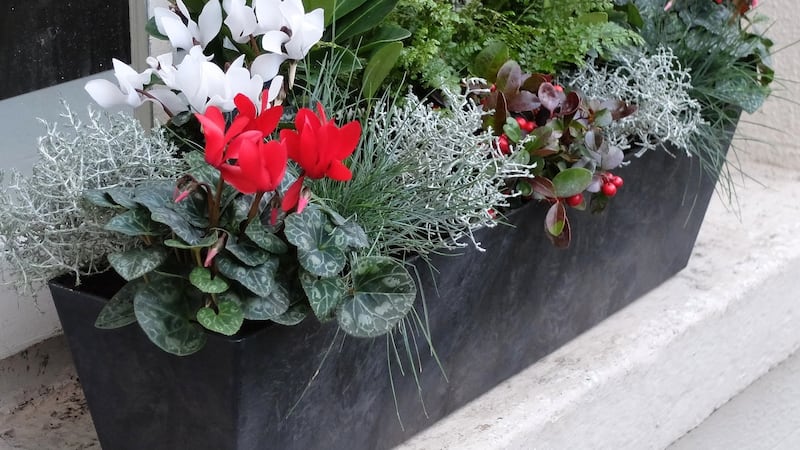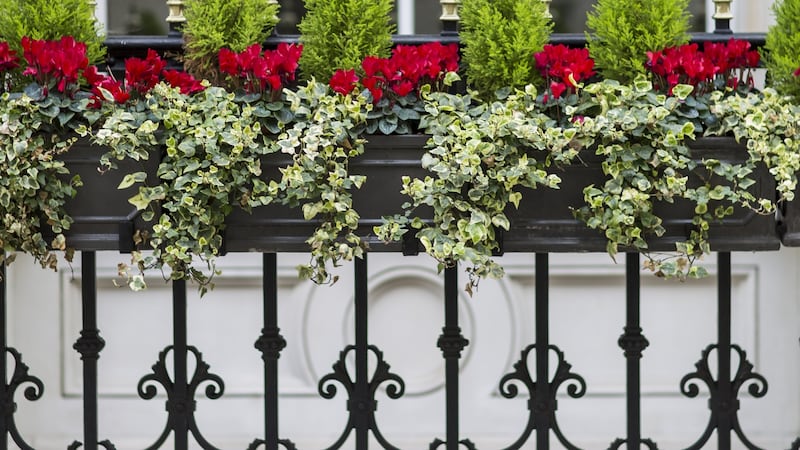There is a certain time of year – those coldest, darkest, gloomiest weeks of deepest winter – when even the keenest gardener can find it hard to summon up the will to work outdoors. Instead it’s about finding pleasure in the small things, which is why this week’s column celebrates the particular joys of a winter window box.
This, by the way, is nothing at all like its frothy summer cousin, brimming with short-lived, showy annuals and an abundance of colourful blooms. Instead the well-planted winter window box is designed for flinty endurance, filled with plants chosen for their ability to withstand icy winds, frosty nights and even, perhaps, the occasional snowfall. Its special charm lies not so much in colourful floral displays (there are only a handful of suitable stalwarts that will dependably provide colourful winter flowers) but more in its clever use of handsome foliage and berrying plants.
Which brings me to another all-important difference: the winter window box uses certain plants that, were they planted in the ground, would reach a considerable size. For example, hollies, hebes, and most varieties of skimmia, the slow-growing, tough evergreen whose flower-buds and/or berries are so reliably decorative at this time of year.


When planting any of these in a conventional garden setting, the textbook advice is to allow generous spacings (square metres) for them to grow and mature. But in the case of winter window boxes, that rule goes (appropriately) out the window. Instead cram them in tightly, on the basis that you’re creating a temporary display to be dismantled come late spring. Just make sure to use young specimens in small pots or liners, not only to keep costs down but also because their smaller root-balls will make it much easier to position them cheek by jowl.
Which brings me to one of the advantages of any winter window box over its flighty summer equivalent: the natural longevity of many of the plants you’ll be using. When the time comes for it to be rejigged (to make way for a summer display), any unwanted plants can be recycled in the garden/allotment or given away to gardening friends. You could even – if they are slow-growing/compact varieties – sink them in pots in the garden to lift and reuse.
Colour and architecture
Spacing aside, all of the other key rules of good planting composition still apply. So think carefully about the selection of plants, not only in terms of their preferred growing conditions but in terms of how they flatter each other. Try to keep to a colour scheme while considering evergreen interest, texture, form, contrasting growth habits and longevity of flowers and berry displays as well as the importance of simplicity and repetition.
Which are the most suitable plants? Old reliables include the aforementioned skimmia, whose flowers come in shades of rusty red and silver-green, trailing ivies, Gaultheria, some compact, evergreen grasses such as Festuca glauca and Carex comans, Buxus, Ilex crenata, winter-flowering heathers, and winter pansies.
Cyclamen are excellent for adding colour, but need a sheltered spot to survive. Hellebores (the hybrids rather than the notoriously difficult Christmas hellebore, H niger), compact, evergreen ferns (varieties of Polystichum, or the Hart's Tongue fern), Vinca, sweetly-scented Christmas box (Sarcococca), Heuchera, and Ajuga are all good for a cool, shady window.
And if you can find space for even a few culinary herbs (sage, rosemary, thyme), you'll have the satisfaction of enjoying a window box that's as productive as it is decorative. To ring in seasonal changes, use dwarf, late-winter/early spring flowering bulbs such as Scillas, Chionodoxa, crocuses, and perfumed hyacinths.
When it comes to the growing medium, use a John Innes soil-based compost, which is much less prone to drying out than a peat-based one. As for the window box itself, try to avoid using the cheap, brittle, plastic kinds, which are unlovely to the eye. Handsome, sturdy window boxes are surprisingly hard to come by, but Darach La Grue of the Decking Depot (near Kill, Co Kildare) will custom-make them in timber to your required design (087-2762029).
Dublin garden shop Howbert & Mays (howbertandmays.ie) also stocks an excellent selection in a range of sizes (from 30cm-90cm long) and in a variety of materials including terracotta, resin-stone composite and fibre clay (from €40). Some come with their own in-built reservoir, which makes the chore of watering a whole lot easier. And if you’re one of those gardeners who prefers to stay indoors during these coldest, darkest days of deepest winter? Well, for a very reasonable fee (from €15) they’ll even plant them up and deliver them to your door.













